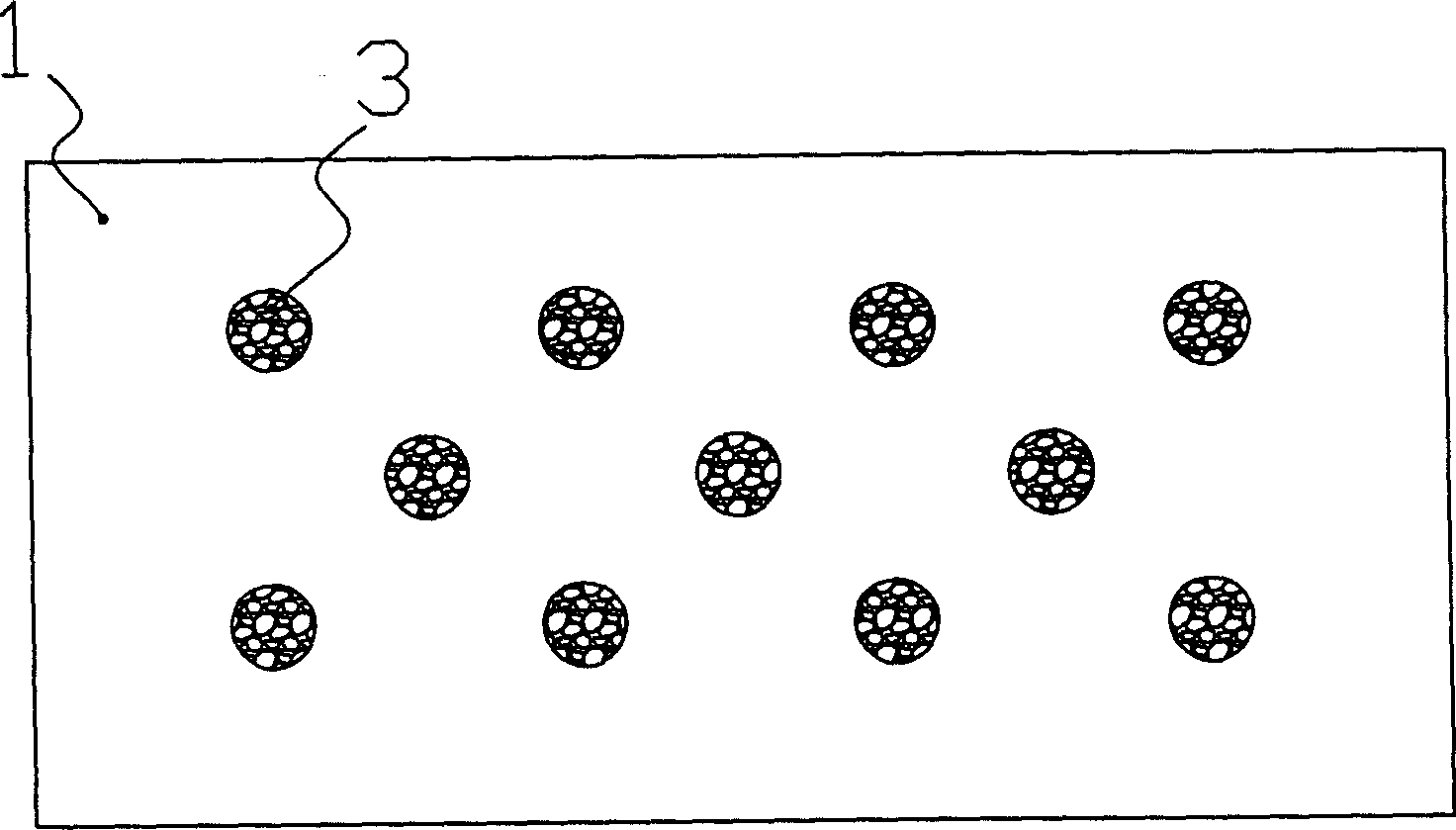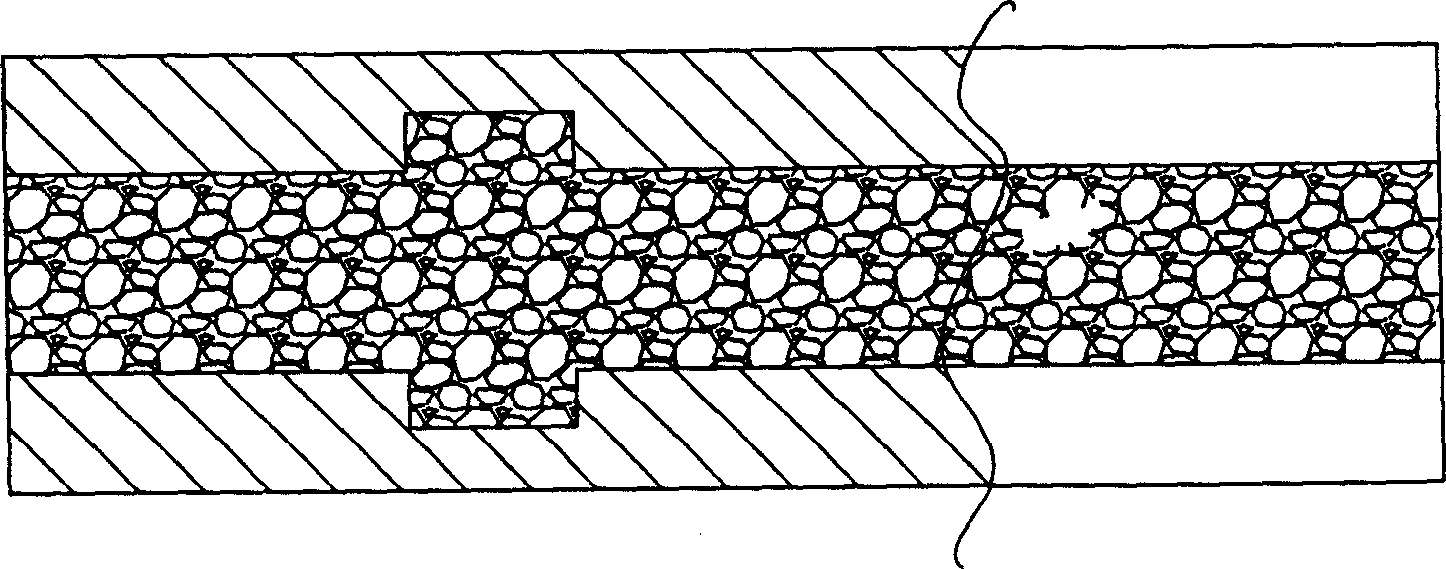Fire-resistance synthetic wood and its manufacturing method
A technology for synthesizing wood and flame-retardant layers, applied in the direction of manufacturing tools, wood-layered products, chemical instruments and methods, etc., can solve practical problems such as fire prevention, and achieve light weight, good toughness, and strong adhesion Effect
- Summary
- Abstract
- Description
- Claims
- Application Information
AI Technical Summary
Problems solved by technology
Method used
Image
Examples
Embodiment 1
[0037] Embodiment 1 of the above-mentioned flame-retardant synthetic wood manufacturing process is as follows:
[0038] 1. Process the wood into a veneer with a thickness of 0.5mm;
[0039] 2. Treat the wood veneer with flame retardant, anti-insect and anti-corrosion treatment: After vacuum pressurization, the vacuum degree is 97% (33mvbar) and the pressure is 2.5mpa. After soaking, add flame retardants, insect repellents, and preservatives (the above materials are made of phosphoric acid, boric acid, and dihydroammonia. deployment);
[0040] 3. Enter the dryer to dry the veneer after flame retardant treatment, and the dry humidity of the veneer in the air is controlled at 40-55%:
[0041] 4. The veneer after drying is manually spliced and shaped, and the shape and size are determined according to the market and users;
[0042] 5. Put the assembled veneer on the special tool for equidistant or unequal-distance drilling, the aperture is Φ3, and the hole distance is between ...
Embodiment 2
[0049] Embodiment 2 of flame-retardant synthetic wood manufacturing process is as follows:
[0050] 1. The wood is processed into a veneer with a thickness of 10mm;
[0051] 2. Treat the wood veneer with flame retardant, anti-insect and anti-corrosion treatment: After vacuum pressurization, the vacuum degree is 97% (33mvbar) and the pressure is 2.5mpa. After soaking, add flame retardants, insect repellents, and preservatives (the above materials are made of phosphoric acid, boric acid, and dihydroammonia. deployment);
[0052] 3. Enter the dryer to dry the veneer after flame retardant treatment, and the dry humidity of the veneer is controlled at 40-55%;
[0053] 4. The veneer after drying is manually spliced and shaped, and the shape and size are determined according to the market and users;
[0054] 5. Put the assembled veneer on the special tool for equidistant or unequal-distance drilling, the hole diameter is Φ20, the hole distance is between 90mm-100mm; the dry humid...
Embodiment 3
[0061] Embodiment 3 of flame-retardant synthetic wood manufacturing process is as follows:
[0062] 1. The wood is processed into a veneer with a thickness of 0.7mm;
[0063] 2. Treat the veneer with fire-retardant, insect-proof and anti-corrosion treatment;
[0064] 3. Enter the dryer to dry the veneer after flame retardant treatment, and the dry humidity of the veneer is controlled at 40-55%;
[0065] 4. The veneer after drying is manually spliced and shaped;
[0066] 5. Put the assembled veneer on the special tool for equidistant or unequal-distance drilling, the aperture is Φ12, and the hole distance is between 50mm-70mm;
[0067] 6. According to the composition and weight ratio: saw foam or peanut shell powder 125kg; talcum powder 27kg; double fly powder 27kg; perlite 30kg; magnesium chloride 315kg; Make a liquid with a density between 1.4 and 1.5 and mix it with other materials;
[0068] 7. Select a good veneer for the top and bottom, and use incomplete ones in the...
PUM
| Property | Measurement | Unit |
|---|---|---|
| Thickness | aaaaa | aaaaa |
| Diameter | aaaaa | aaaaa |
| Pitch | aaaaa | aaaaa |
Abstract
Description
Claims
Application Information
 Login to View More
Login to View More - R&D
- Intellectual Property
- Life Sciences
- Materials
- Tech Scout
- Unparalleled Data Quality
- Higher Quality Content
- 60% Fewer Hallucinations
Browse by: Latest US Patents, China's latest patents, Technical Efficacy Thesaurus, Application Domain, Technology Topic, Popular Technical Reports.
© 2025 PatSnap. All rights reserved.Legal|Privacy policy|Modern Slavery Act Transparency Statement|Sitemap|About US| Contact US: help@patsnap.com



